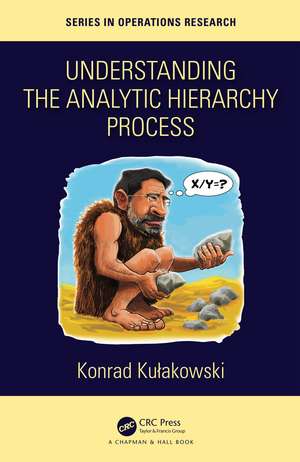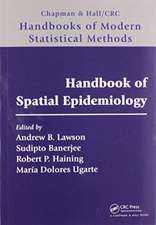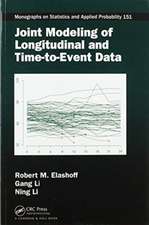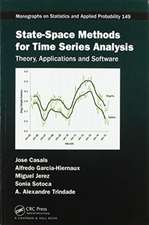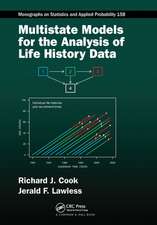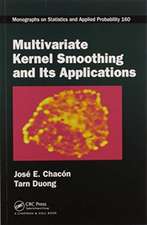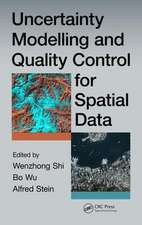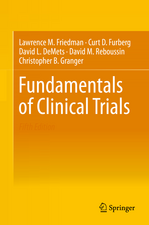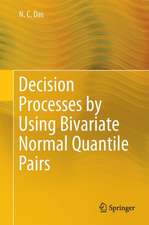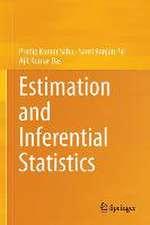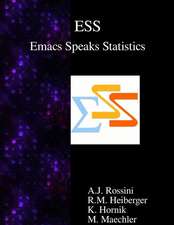Understanding the Analytic Hierarchy Process: Chapman & Hall/CRC Series in Operations Research
Autor Konrad Kulakowskien Limba Engleză Hardback – 11 noi 2020
Preț: 935.74 lei
Preț vechi: 1028.29 lei
-9% Nou
Puncte Express: 1404
Preț estimativ în valută:
179.05€ • 187.62$ • 148.02£
179.05€ • 187.62$ • 148.02£
Carte tipărită la comandă
Livrare economică 12-26 aprilie
Preluare comenzi: 021 569.72.76
Specificații
ISBN-13: 9781138032323
ISBN-10: 1138032328
Pagini: 262
Ilustrații: 29 Illustrations, black and white
Dimensiuni: 156 x 234 x 23 mm
Greutate: 0.54 kg
Ediția:1
Editura: CRC Press
Colecția Chapman and Hall/CRC
Seria Chapman & Hall/CRC Series in Operations Research
ISBN-10: 1138032328
Pagini: 262
Ilustrații: 29 Illustrations, black and white
Dimensiuni: 156 x 234 x 23 mm
Greutate: 0.54 kg
Ediția:1
Editura: CRC Press
Colecția Chapman and Hall/CRC
Seria Chapman & Hall/CRC Series in Operations Research
Cuprins
1. AHP as a decision-making method. 1.1. Why we need decision-making methods. 1.2. AHP basics. 1.3. Neat examples. 2. PC Matrices. 2.1. Cardinal PC Matrix. 2.2. Ordinal PC Matrix. 2.3. Incomplete PC matrix. 2.4. PC matrix as a graph. 2.5. Graph as a matrix. 2.6. Additive PC matrix. 2.7. Fuzzy PC matrix. 3. Prioritization methods. 3.1. Eigenvalue Method. 3.2. Geometric mean method. 3.3. Optimization methods. 3.4. Weighted column sum methods. 3.5. Towards comparing prioritization methods. 4. Prioritization methods for incomplete PC matrices. 4.1. Eigenvalue method for incomplete PC matrices. 4.2. Geometric mean method for incomplete PC matrices. 4.3. Logarithmic Least Square Method. 4.4. Optimization methods. 4.5. Other optimization methods. 5. Rating scale. 5.1. The concept of a rating scale. 5.2. Rating scales for AHP. 6. Inconsistency. 6.1. Introduction. 6.2. Preliminaries. 6.3. Quantifying inconsistency. 6.4. Properties of inconsistency indices. 7. Inconsistency of incomplete PC matrices. 7.1. Introduction. 7.2. Preliminaries. 7.3. Quantifying inconsistency. 7.4. Incompleteness and inconsistency. 8. Group Decisions. 8.1. Aggregation methods. 8.2. Consensus methods. 8.3. Compatibility index. 9. Ordinal inconsistency. 9.1. Condition of order preservation. 9.2. Kendall Babington-Smith inconsistency index. 10. Fuzzy AHP. 10.1. Fuzzy LLSM. 10.2. Order of alternatives in the fuzzy ranking. 10.3. Exact solution based on fuzzy preferences. 10.4. Other methods and discussion. 11. Heuristic Rating Estimation. 11.1. The idea of HRE. 11.2. Additive HRE. 11.3. Existence of a solution for additive HRE. 11.4. Geometric HRE. 11.5. Existence of a solution for geometric HRE. 11.6. Is geometric HRE optimal? 11.7. Illustrative examples. Bibliography. Index
Notă biografică
Konrad Kułakowski is an Associate Professor and Deputy Head of the Department of Applied Computer Science, Faculty of Electrical Engineering, Automatics, Computer Science and Biomedical Engineering at the AGH University of Science and Technology (AGH UST). He received his Ph.D. and Habilitation in computer science from AGH UST. His research interests are focused on multiple-criteria decision-making methods, including AHP, and their applications, theory and practice of the pairwise comparison method, parallel programming, and algorithms. He serves as a reviewer of many international journals in operational research and computer science. He has organized several special sessions in International Conferences on Computer Science and Operational Research. He has also served as a member of program committees at numerous international IT and OR conferences and meetings.
Recenzii
"In general, the book is useful for specialists in AHP and MCDM techniques, and can be helpful for researchers and practitioners in various problems of decision making."
–Technometrics
"The Analytic Hierarchy Process (AHP) is one of the best-known methods of multi-criteria decision-making. This method provides a convenient and versatile framework for modelling decision problems, evaluating alternatives and deriving final priorities. Rather than proposing a "best" solution, AHP allows the user to create a ranking of alternatives, then choose the one which is subjectively the most satisfying.
Understanding Analytic Hierarchy Process is not only beneficial for undergraduate, graduate, or postgraduate students:, but for the researchers as well in the areas of operations research decision theory linear algebra, interval analysis, and, fuzzy sets.
–Jaroslav Ramik, Ph.D., professor of operations research and statistics, School of Business Administration in Karvina, Silesian University in Opava, Czechia
"This book is inclusive in the sense that it presents concepts whose relevance goes beyond the AHP. [. . .] It is auspicable and reasonable to expect that this book will also serve as a bridge between different communities.
The book has two types of uses. It can be read from front to back by those with no previous knowledge of the AHP and can be seen as a ‘cookbook’, to always keep on your shelf. Each chapter is structured in such a way that makes it a self-standing story which, with some caution on the notation, is also self-contained.
[. . . ] I believe that, whatever type of reader you are, this book will help you understand the AHP."
–Matteo Brunelli, University of Trento
"Dr. Kulakowski is a world-renowned expert in Pairwise Comparisons, a field of growing importance and wide applicability. The Analytic Hierarchy Process is a fundamental approach in this area, and this books collects and examines all the recent developments, applications and ideas, and provides software code to make it even more relevant to the user who wishes to deploy it immediately. I highly recommend this book."
–Michael Soltys, Professor & Chair Dept. of Computer Science, California State University Channel Islands
–Technometrics
"The Analytic Hierarchy Process (AHP) is one of the best-known methods of multi-criteria decision-making. This method provides a convenient and versatile framework for modelling decision problems, evaluating alternatives and deriving final priorities. Rather than proposing a "best" solution, AHP allows the user to create a ranking of alternatives, then choose the one which is subjectively the most satisfying.
Understanding Analytic Hierarchy Process is not only beneficial for undergraduate, graduate, or postgraduate students:, but for the researchers as well in the areas of operations research decision theory linear algebra, interval analysis, and, fuzzy sets.
–Jaroslav Ramik, Ph.D., professor of operations research and statistics, School of Business Administration in Karvina, Silesian University in Opava, Czechia
"This book is inclusive in the sense that it presents concepts whose relevance goes beyond the AHP. [. . .] It is auspicable and reasonable to expect that this book will also serve as a bridge between different communities.
The book has two types of uses. It can be read from front to back by those with no previous knowledge of the AHP and can be seen as a ‘cookbook’, to always keep on your shelf. Each chapter is structured in such a way that makes it a self-standing story which, with some caution on the notation, is also self-contained.
[. . . ] I believe that, whatever type of reader you are, this book will help you understand the AHP."
–Matteo Brunelli, University of Trento
"Dr. Kulakowski is a world-renowned expert in Pairwise Comparisons, a field of growing importance and wide applicability. The Analytic Hierarchy Process is a fundamental approach in this area, and this books collects and examines all the recent developments, applications and ideas, and provides software code to make it even more relevant to the user who wishes to deploy it immediately. I highly recommend this book."
–Michael Soltys, Professor & Chair Dept. of Computer Science, California State University Channel Islands
Descriere
The aim of Understanding Analytic Hierarchy Process book is to provide the reader with a critical guide to AHP. In this book, the AHP method is considered primarily as a mathematical technique supporting the decision-making process.
